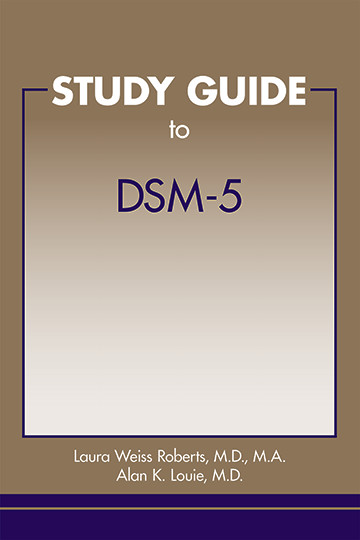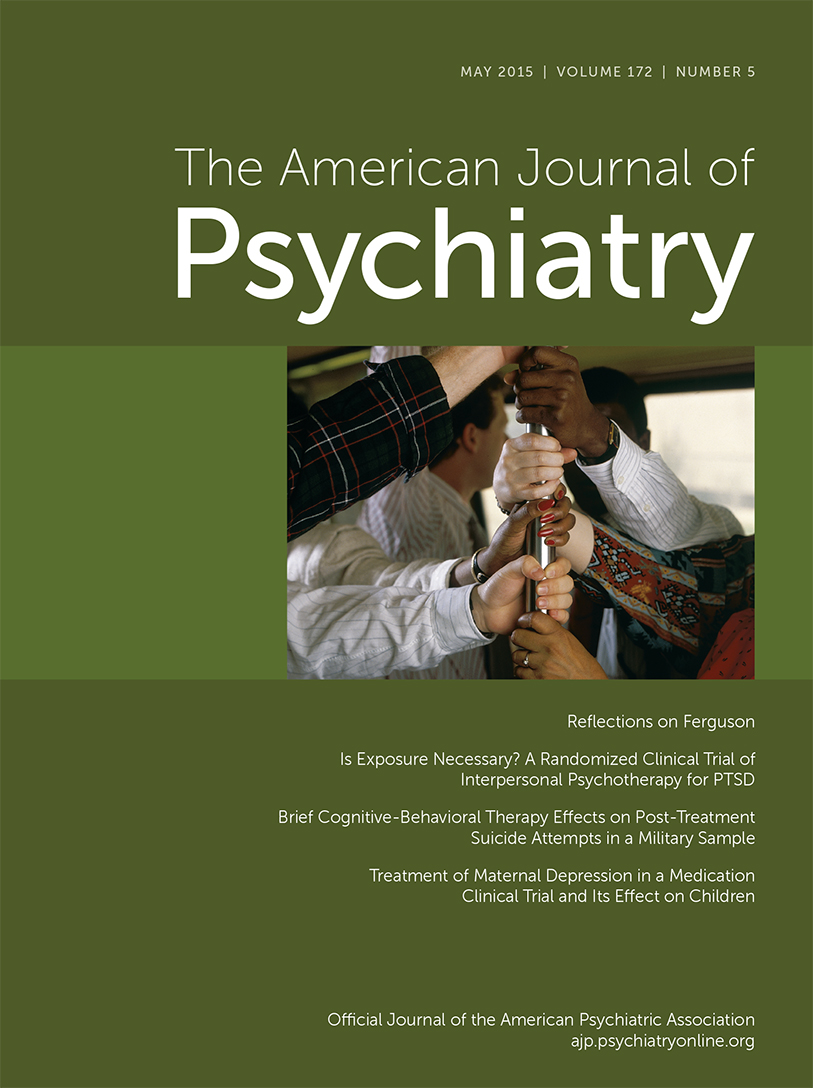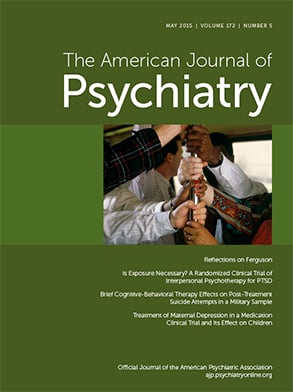The publication of DSM-5 introduced the product of years of research and clinical debate meant to address the evolution of psychiatric practice over the past decade. Mental health clinicians, researchers, and trainees, now armed with this revised manual, are tasked with digesting new information, applying it to patient care and ultimately coming up with accurate psychiatric diagnoses. This exercise can be a challenging one, indeed, catalyzing the creation of the Study Guide to DSM-5, by Laura Weiss Roberts, M.D., M.A., and Alan K. Louie, M.D. This Study Guide is meant to facilitate the process of registering new information as presented in DSM-5 through detailed explanation of diagnostic frameworks and concentrated study of diagnostic classes. In contrast to DSM-5, which focuses on psychopathology with a disorder-centered approach, the Study Guide introduces a patient-centered approach meant to highlight the human experience of a condition. Essentially, this Study Guide aims to translate the diagnostic criteria of DSM-5 into the true experiences of patients.
The Study Guide to DSM-5 is organized into three parts, with the first focusing on foundations, the second on DSM-5 diagnostic classes, and the third providing questions and answers to test information recall. Foundations, or part I, puts DSM-5 in context through explaining the purpose and utility of diagnostic frameworks and how these affect patient care. The authors assert that the hallmark of an excellent clinician is not simply the ability to diagnose an illness correctly but to understand the experience of the illness within the context of the patient’s life. The full magnitude of rendering a psychiatric diagnosis is discussed, from issuing true positive diagnoses to false negative ones. A helpful table is provided to sum up the cost/benefit of all four diagnostic permutations (i.e., true positives, false positives, true negatives, and false negatives), introducing important topics such as stigma, delay to treatment, sparing of side-effect burden, and identity surrounding a diagnostic label. A case example of diagnosis-related stigma is provided, where a patient named “Matthew” was diagnosed with major depressive disorder during high school after a breakup with his girlfriend. He experienced symptoms of depression for 2 weeks, was treated with antidepressant medication for 6 weeks, then discontinued treatment when he felt better. Several years later, the patient applied to be a pilot for a major passenger airline and reported that he had been diagnosed with major depressive disorder as a teenager. Despite a wonderful interview, the patient did not receive the job and was left wondering whether his prior diagnosis was the reason behind this decision. The take-home point for providers is that diagnostic labels are powerful and should be applied responsibly.
The bulk of the Study Guide, part II, highlights the diagnostic classes in DSM-5, providing case vignettes, differential diagnoses, diagnostic pearls, and a self-assessment section, including key concepts, thought-provoking questions to discuss with colleagues/mentors, case-based questions, and short-answer questions. Considering the Study Guide is a companion book to DSM-5, its content parallels that of DSM-5, beginning with discussion of neurodevelopmental disorders and ending with paraphilic disorders. Because of space limitations, the authors chose not to review specific sections in DSM-5 in favor of providing a detailed analysis of more prevalent mental disorders where discussion of psychosocial, cultural, and unexpected elements of a case can be addressed. As such, the following sections were omitted: other mental disorders, medication-induced movement disorders and other adverse effects of medication, other conditions that may be a focus of clinical attention, conditions for further study, highlights of changes from DSM-IV to DSM-5, and a glossary of technical terms. Despite this, approximately 400 pages are dedicated to bringing multiple mental disorders to life through describing critical elements of history taking, pertinent interview questions designed to differentiate between the subtleties of closely related disorders, introduction of important epidemiologic data, and outlining the influence of gender, culture, and psychosocial factors in symptom presentation. The Study Guide is built around the notion that careful study of DSM-5 diagnostic criteria coupled with clinical experience (i.e., pattern recognition) fosters the development of professional judgment. It is clear that the authors designed the Study Guide to foster understanding of the rational behind DSM-5 diagnostic criteria, with the goal of deeply evaluating each patient who may present with relatively ambiguous symptoms. The chapter titled Bipolar and Related Disorders features these components, going to great lengths to explain a historically challenging panel of mental disorders. The chapter introduction, like all chapter introductions in part II of the Study Guide, mirrors DSM-5 in that it presents epidemiologic data of the disorder and key differences between DSM-IV and DSM-5, becoming most interesting when transitioning to the “in-depth diagnosis” section. A complex case of bipolar disorder is introduced to stimulate the reader, followed by a section explaining how to approach the diagnosis. The authors introduce DSM-5 diagnostic criteria, though skillfully focus on challenging concepts such as common comorbid conditions or distinguishing episodes of mood elevation related to bipolar I or II disorder as opposed to episodes triggered by antidepressants or illicit substances. Such subtleties are important to highlight, as they may confuse a novice clinician. The authors present two more cases in the chapter that illustrate the importance of obtaining a detailed patient history, as well as understanding the influence of culture on case formulation. Through this patient-centered approach, the reader is able to grasp practical application of DSM-5 diagnostic criteria through working through relatively common, though complex, case scenarios. Perhaps the most high-yield section of the chapter is the “summary” section, which includes a recap of important presenting symptoms, bullet points of diagnostic pearls, and assesses the reader’s grasp of key concepts through discussion, case-based, and short-answer questions.
The Study Guide concludes with part III, a section dedicated to helping readers apply and consolidate their knowledge of concepts presented throughout the book. Many of the questions presented are embedded in case studies of prevalent mental illnesses from DSM-5 or highlight phenomena that relate to critical diagnostic features. While discussion of the rationale behind correct answer choices may have been helpful along with the reasoning behind incorrect answer choices, the authors opted for a more concise approach by simply listing the correct answer. This style facilitates a relatively quick review of the material presented in the Study Guide, which has the potential to bolster confidence regarding comprehension of challenging diagnoses.
The Study Guide to DSM-5 is a worthwhile purchase to add to growing psychiatric libraries. It caters to the needs of the more novice trainee through review of key diagnostic criteria of the most prevalent mental illnesses while simultaneously appealing to seasoned clinicians/researchers through discussion of more subtle symptom presentations. The Study Guide stays true to its promise of illustrating how words in one of the most heavily cited psychiatric manuals in the world come together in the real-life experience of patients.


